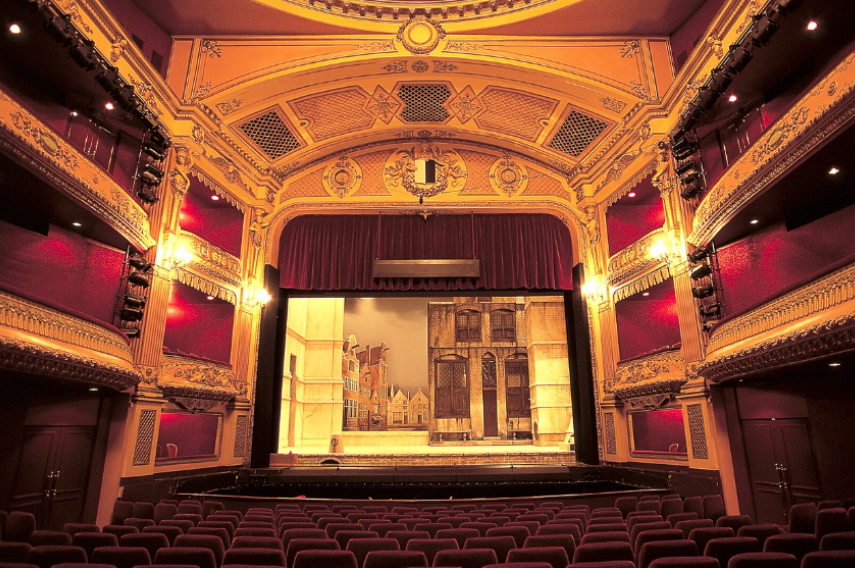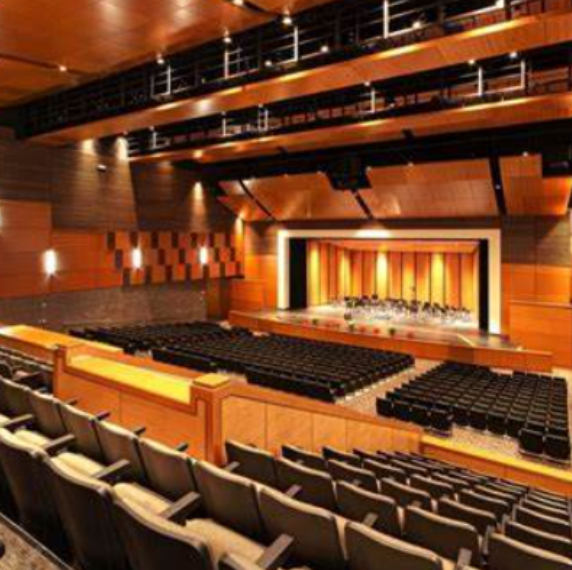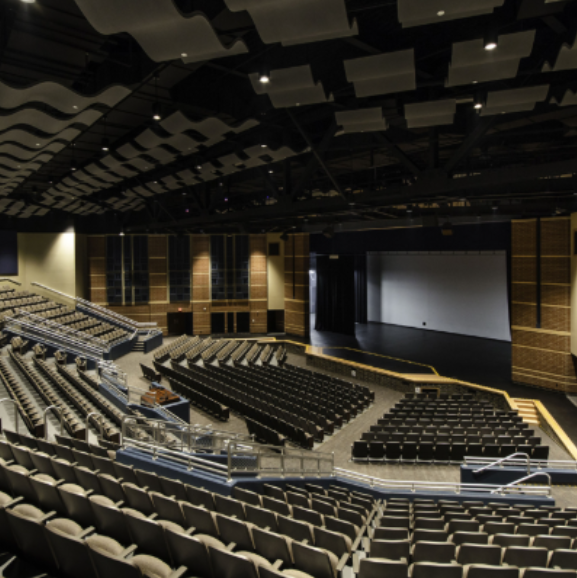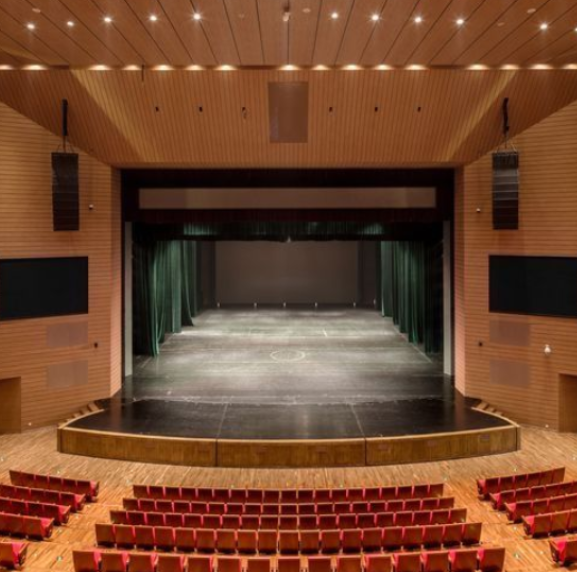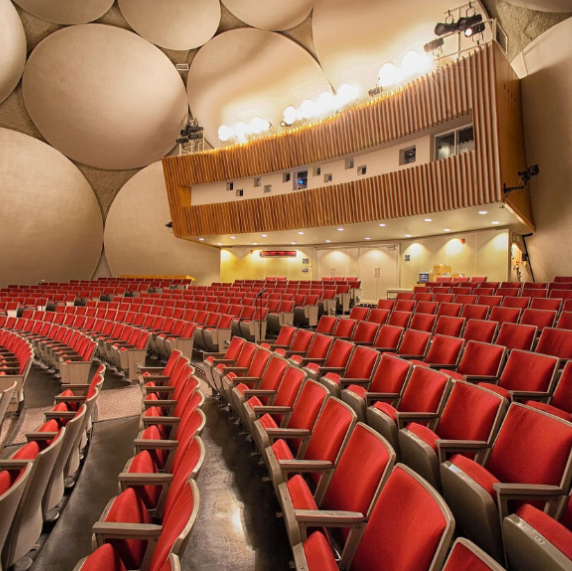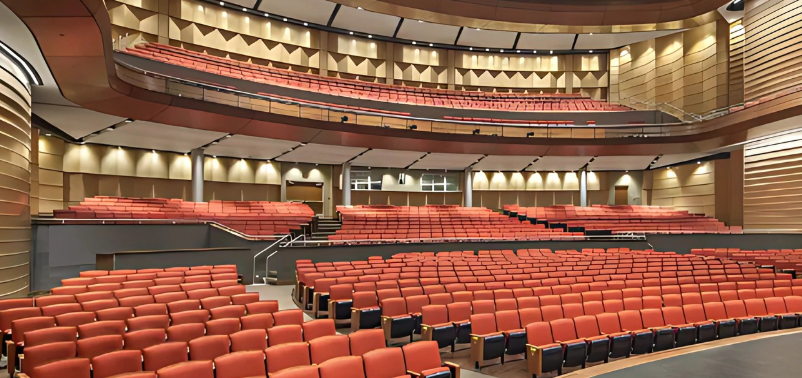Making a Small Auditorium: Layout ideas, key parts and practical tips
Crafting a small auditorium is satisfying but a daunting task. if for a spiritual facility like church, community center or corporate office a beautifully crafted small auditorium can give captivating experiences in a concise footprint. The key lies in upgrading places while guaranteeing comfort, great acoustics and functionality. In this blog, we will analyze the parts of a small auditorium, explore the best layout ideas, and answer the Frequently asked questions.
Whether or not you are renovating an old setup or starting from scratch, grasping the beginnings of modern auditorium design will help you make smart decisions.
Parts of a Small Auditorium
Before hopping into design ideas, it is essential to understand the parts of a small auditorium:
1.Mapping out spaces smartly
Start with a sharp understanding of the space’s reason. Is it mainly for live performances, speeches, film screenings, or all these aspects?
-
Reinforce sightlines by uplifting the stage slightly and using staggered or raked seating.
-
Leave ample space for safe exits and wheelchair access even in a tight space.
-
Use foldable or flexible seating for versatile spaces.
2. Soundproofing and Acoustics
In a concise space, sound can easily become chaotic if not managed properly.
-
Set up acoustic panels on ceilings and walls to minimize echoes and improve clarity.
-
Use upholstered seating or carpeting to absorb sound.
-
Take into account a sound reflecting ceiling also known as an acoustic cloud over the stage.
3. Light Arrangement
Good lighting uplifts visibility, mood and the whole experience.
-
Use a combination of accent lighting, task and ambient.
-
Dimmable LED lights helps in defining the vibe for different occasions.
-
Incorporate stage lighting options like track lighting, spotlights and color washes.
4. Stage and Backstage Design
Even in a compact space, the stage should be fully-equipped.
-
Use customizable stage platforms that can be redesigned.
-
Supply basic backstage facilities like a green room, storage for props and dressing area even a corner curtained will do.
5. Technology and AV Integration
Keep the audience invested with high tech audio and visual systems.
-
Establish a premium quality projector and retractable screen if the auditorium will be used for movies or presentations.
-
Assure robust sound setup with speakers well distributed across the space.
-
Reflect on AV to simplify operation and smart control systems for lighting.
Innovative ideas for space effectiveness
-
Go for pyramidal seating balconies to increase size without extending the floor plan.
-
Fold-out or wall-mounted desks can be included if it will be used for seminars.
-
Fuse natural light through side windows or skylights with light blocking curtains for flexibility.
Best 4 layouts for small auditorium blueprint
When it comes to layout, the aim is to confirm everyone gets a pretty clear view, movement is smooth, and sound reaches every corner, and below are 4 popular and effective layout plans:
1.Thrust Stage Layout
Best suited for: Storytelling events, Community theaters,
Summary: The stage stretches into the seating area, with the audience on 3 sides.
Positive aspects:
-
More engaging and immersive experience
-
People is closer to the performance
Designing tip: Keep acoustics and lighting rigs in mind, because sound might need special direction control.
2. Arena Layout
Best suited for: Discussions, Experimental performances
Summary: The audience encloses the stage on all the 4 sides.
Positive aspects:
-
Highly unique and engaging
-
Promotes interaction
Designing tip: Stage design must allow 360-degree viewing; lighting and sound require extra planning.
3. Multi-purpose Flexible Layout
Best suited for: Small institutions needing versatility
Summary: Modular staging and movable chairs allows the space to be reorganized.
Positive aspects:
-
Can be set up for different events
-
Economical and adaptable
Designing tip: Use collapsible furniture and lightweight materials to allow easy changes.
4. End Stage Layout
Best suited for: Small theatres, Schools, Churches,
Summary: The stage is located at one end of the auditorium with seating directly in front.
Positive aspects:
-
Wallet friendly and simple
-
Clear visibility and sound quality
-
Works great for performances, ceremonies and lectures.
Designing tip: Add tiered or sloped seating to refine the line of sight in greater rooms.
Some FAQ for Small Auditorium
Q1: Ideal size for a small auditorium?
Small auditorium typically fits 50 to 200 seats.
Q2: Tips to improve acoustics in small auditorium?
Go for ceiling clouds, carpeted flooring and acoustic wall panels. cushioned seating also helps in reducing echo.
Q3: What are economical materials for small auditorium design?
You can use laminate panels, plywood, fabric curtains, acoustic foam and LED lighting. These are effective and affordable.
Q4: How can I craft a tightly packed but functional small auditorium stage?
In small auditorium stage design, use an uplifted platform with versatile side wings, basic set decor, and unified lighting. A 21–32 ft width and 13–17 ft depth often works well.
Q5: Is it possible to add natural lighting to a small auditorium?
Yes but it should be controlled with motorized blinds or Opaque curtains to prohibit light disturbance during performances.
Conclusion
Crafting a small auditorium is about maximizing effectiveness within a tight space. By interpretating the important parts of the auditorium, choosing a blueprint that matches your necessities, and using innovative materials, you can design a space that is productive, visually pleasing and acoustically sound. Whether you are giving an old hall a makeover or planning a modern small auditorium design, let your audience’s experience guide your choices. At Think digital, we specialize in modifying such spaces into operational, modern environments that elevates audience live through. Allow us to help you build the maximum of your space with mindful design and creative solutions.
